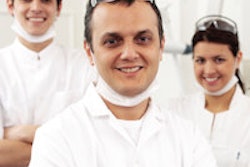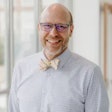A new policy brief has outlined the causes of California's dentist shortage.
The report was issued by the University of California, Los Angeles (UCLA) Center for Health Policy Research. It cites a lingering recession, the elimination of Medicaid dental reimbursements, and a glut of established dentists in wealthier, populated areas as possible reasons why more new dentists are practicing outside of the state.
While California still saw an increase in the number of dentists and had more licensed dentists -- more than 35,000 -- than any other state in 2012, the number of those licensed to practice in California who opted to reside or work out of state grew 6% between 2008 and 2012.
The migration is especially noticeable among new dentists. In 2012, 86% of those licensed within the previous five years practiced in the state, a 10% drop from 2008. In addition, new dentists in 2012 made up a smaller share of the state's overall supply. Of all regions, the San Joaquin Valley tallied the highest percentage of new dentists, who made up 15% of the local supply.
One noteworthy development: Women made up almost half of all newly licensed dentists in California in 2012.
Meanwhile, age appears to be affecting supply. Nearly one-quarter of actively licensed dentists in California have been practicing for 30 years or more and are close to retirement age. Northern and Sierra counties had the highest proportion of dentists nearing retirement, at 40%.
The report authors also suggested that it may become tougher for adults to get basic oral care than periodontal surgery, as more new dentists are specializing.
Overall, 13% of newly licensed and actively practicing dentists in the state identified themselves as specialists in 2012, a 6% bump since 2008.
Patients in the San Joaquin Valley may have the highest share of newly licensed dentists in their area, but they still have the lowest ratio of dentists to patients in the state, with 2.4 dentists for every 5,000 people. In contrast, Greater Bay Area residents have the highest dentist-to-patient ratio -- 5.1 per 5,000, topping the state average of 3.9.
Although economic conditions in the state are likely to improve, new dentists must be motivated to practice in underserved areas, according to the report. Options such as assistance with dental school loan repayment, small-business loans, and higher Medicaid reimbursement rates to provide incentives should be further developed for better effectiveness, the report authors noted.



















